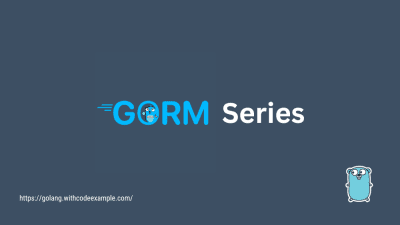Testing and Debugging in GoLang Fiber
- With Code Example
- November 16, 2023
Building Reliable and Efficient Applications
Series - Fiber Golang
- 1: Introduction to GoLang Fiber
- 2: Routing and Middleware in Fiber Golang
- 3: Request and Response Handling in Fiber
- 4: Templates and Views in Fiber Golang
- 5: Database Integration in GoLang Fiber
- 6: Secure Authentication and Authorization in GoLang Fiber
- 7: File Upload and Handling in GoLang Fiber
- 8: API Development with GoLang Fiber
- 9: Testing and Debugging in GoLang Fiber
- 10: Deployment and Scaling of GoLang Fiber Applications
In the world of web development, the journey to creating robust applications involves mastering the arts of testing and debugging. GoLang Fiber , a powerful web framework, provides an environment conducive to effective testing and debugging practices. In this extensive guide, we will explore the nuances of unit testing and integration testing in Fiber, the art of mocking dependencies for testing, debugging Fiber applications, strategies for handling errors and exceptions and delving into profiling and performance optimization. By the end of this guide, you’ll be equipped with the skills to ensure the reliability and efficiency of your GoLang Fiber applications.

Unit Testing and Integration Testing in Fiber
Testing is the cornerstone of building reliable software. In Fiber Golang , a structured approach to unit testing and integration testing is pivotal for verifying the functionality of your code.
Unit Testing:
Begin by writing unit tests for individual components or functions. Utilize Fiber’s testing capabilities to create focused tests that verify the correctness of specific units of code.
// Example unit test for a function func TestAdd(t *testing.T) { result := Add(2, 3) if result != 5 { t.Errorf("Expected result to be 5, got %d", result) } }Execute unit tests using the
go testcommand.Integration Testing:
Move beyond individual units and conduct integration tests to ensure that different components of your application work seamlessly together. Set up test scenarios that mimic real-world usage.
// Example integration test for an API endpoint func TestAPIEndpoint(t *testing.T) { // Set up test environment // Make requests to the API endpoint // Validate responses }Integration tests provide a holistic view of your application’s behavior.
Mocking Dependencies for Testing
In complex applications, dependencies such as databases or external services can be challenging to test. Mocking allows you to simulate these dependencies, ensuring comprehensive test coverage.
Use Mocking Libraries:
Leverage mocking libraries like
github.com/stretchr/testify/mockto create mock implementations of dependencies. This enables you to control the behavior of dependencies during testing.// Example using testify/mock type MockDatabase struct { mock.Mock } func (m *MockDatabase) SaveData(data string) error { args := m.Called(data) return args.Error(0) }Mocking libraries simplify the creation of mock objects and facilitate controlled testing.
Inject Mock Dependencies:
Inject mock dependencies into your code during testing. This ensures that the code interacts with the mocks instead of the actual dependencies.
// Example injecting a mock database func SomeFunction(db Database) error { // Use the database interface return db.SaveData("test data") } func TestSomeFunction(t *testing.T) { mockDB := new(MockDatabase) mockDB.On("SaveData", "test data").Return(nil) err := SomeFunction(mockDB) if err != nil { t.Errorf("Expected no error, got %v", err) } }Injecting mocks allows you to control the behavior of dependencies in different test scenarios.
Debugging Fiber Applications
Effective debugging is a crucial skill for developers. GoLang Fiber provides robust tools and techniques to debug applications and identify issues.
Logging:
Leverage logging to gain insights into the flow of your application. Use the
logpackage to output relevant information at different points in your code.// Example logging in a Fiber route handler app.Get("/debug", func(c *fiber.Ctx) error { log.Println("Received request to /debug") // Handle request return c.SendString("Debug endpoint") })Analyze log outputs to trace the execution of your code.
Interactive Debugging:
Utilize GoLang’s built-in support for interactive debugging. Tools like Delve (
dlv) allow you to set breakpoints, inspect variables, and step through your code.go get -u github.com/go-delve/delve/cmd/dlv dlv debugInteractive debugging provides a dynamic way to analyze and understand your code’s behavior.
Handling Errors and Exceptions
In the unpredictable world of software development, handling errors and exceptions gracefully is crucial for maintaining the stability and reliability of your application.
Error Wrapping:
Implement error wrapping to provide context and traceability to errors. Use the
errorspackage to create informative error messages.// Example error wrapping func SomeFunction() error { result, err := performOperation() if err != nil { return errors.Wrap(err, "failed to perform operation") } // Continue processing return nil }Error wrapping enhances the clarity of error messages, making it easier to diagnose issues.
Recover from Panics:
Use
recoverto catch and handle panics, preventing your application from crashing abruptly.// Example recovering from panic func SafeFunction() { defer func() { if r := recover(); r != nil { log.Println("Recovered from panic:", r) } }() // Code that may cause panic }Recovering from panics allows your application to gracefully handle unexpected situations.
Profiling and Performance Optimization
Ensuring optimal performance is a continuous process. Profiling your application helps identify bottlenecks and areas for improvement.
CPU Profiling:
Utilize CPU profiling to identify which parts of your code consume the most processing time.
go test -cpuprofile=cpu.prof -bench=.Analyze the generated profile using tools like
go tool pprofto identify performance hotspots.Memory Profiling:
Conduct memory profiling to understand how your application utilizes memory.
go test -memprofile=mem.prof -bench=.Analyze memory profiles
to detect memory leaks or excessive memory usage.
Conclusion
In this comprehensive guide, we’ve navigated through the essential aspects of testing and debugging in GoLang Fiber. From unit testing and integration testing to mocking dependencies, debugging techniques, error handling, and performance optimization, you now possess the knowledge to fortify your applications against bugs and inefficiencies.
As you integrate these practices into your development workflow, remember that testing and debugging are iterative processes. Regularly revisit your tests, refine your debugging strategies, and optimize performance to ensure your GoLang Fiber applications are robust, reliable, and efficient.
By mastering the art of testing and debugging in GoLang Fiber, you contribute to the creation of stable and high-performance web applications. Empower yourself with these skills, enhance your development practices, and build applications that stand the test of time in the dynamic landscape of web development.





